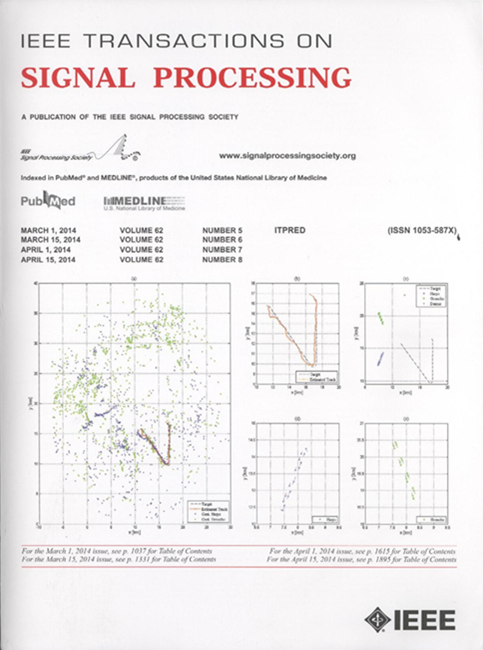TDD大规模MIMO通信下行-上行协同信道估计
IF 5.8
2区 工程技术
Q1 ENGINEERING, ELECTRICAL & ELECTRONIC
引用次数: 0
摘要
信道估计(CE)是大规模多输入多输出(MIMO)通信系统的关键组成部分,但现有的信道估计方法需要大量的训练开销,并且由于天线数量过多而导致估计精度有限。在本文中,我们重点研究了时分双工(TDD)大规模MIMO系统的CE问题,其中下行链路(DL)和上行链路(UL)信道表现出强互易性。为了充分利用信道互反性,我们设计了一种DL-UL协同信道探测方案,该方案在两侧使用有限数量的发射天线以节省训练开销。通过将具有不同信噪比的DL和UL信道测量值整合到两个数据拟合项中,我们将CE问题表述为下行-上行协同原子范数最小化(DUCANM)问题,并提供了选择相关超参数的理论分析。为了有效地解决DUCANM问题,提出了一种部分解耦的原子范数最小化公式。为了进一步加快DUCANM的计算速度,我们提出了一种基于乘法器交替方向法的快速算法。数值模拟结果表明,本文提出的方法在CE精度、训练开销和运行时间方面具有优越性。本文章由计算机程序翻译,如有差异,请以英文原文为准。
Downlink-Uplink Collaborative Channel Estimation for TDD Massive MIMO Communications
Channel estimation (CE) is a crucial component in massive multiple-input multiple-output (MIMO) communication systems, while existing CE methods require a large training overhead and suffer from limited estimation accuracy due to the excessively high number of antennas. In this paper, we focus on the CE problem for time-division duplex (TDD) massive MIMO systems, where downlink (DL) and uplink (UL) channels exhibit strong reciprocity. To fully exploit the channel reciprocity, we design a DL-UL collaborative channel sounding scheme that employs a limited number of transmit antennas on both sides to save training overhead. By integrating DL and UL channel measurements with different signal-to-noise ratios into two data-fitting terms, we formulate the CE problem as a downlink-uplink collaborative atomic norm minimization (DUCANM) problem and provide theoretical analysis to select the hyperparameters involved. A partially decoupled atomic norm minimization formulation is proposed to solve the DUCANM problem effectively. To further accelerate the computation of DUCANM, we propose a fast algorithm based on the alternating direction method of multipliers. Numerical simulations are provided that demonstrate the superiority of our proposed method in terms of CE accuracy, training overhead, and running time.
求助全文
通过发布文献求助,成功后即可免费获取论文全文。
去求助
来源期刊

IEEE Transactions on Signal Processing
工程技术-工程:电子与电气
CiteScore
11.20
自引率
9.30%
发文量
310
审稿时长
3.0 months
期刊介绍:
The IEEE Transactions on Signal Processing covers novel theory, algorithms, performance analyses and applications of techniques for the processing, understanding, learning, retrieval, mining, and extraction of information from signals. The term “signal” includes, among others, audio, video, speech, image, communication, geophysical, sonar, radar, medical and musical signals. Examples of topics of interest include, but are not limited to, information processing and the theory and application of filtering, coding, transmitting, estimating, detecting, analyzing, recognizing, synthesizing, recording, and reproducing signals.
 求助内容:
求助内容: 应助结果提醒方式:
应助结果提醒方式:


